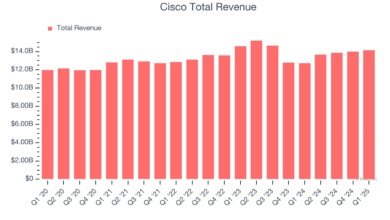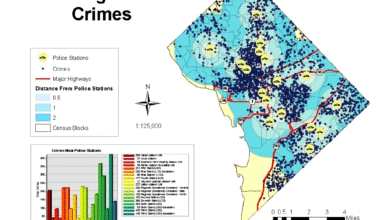Home Price Hikes: Trends in the Housing Market Today

Home price hikes are slowing more than expected as the housing market grapples with increased supply and persistent high mortgage rates. After experiencing significant growth during the pandemic, home prices in various once-booming markets are witnessing a notable decline. The S&P CoreLogic Case-Shiller Index reveals a modest annual increase of just 2.7% in April, highlighting a shift in housing market trends that many analysts are closely monitoring. With few homes for sale, the chances of drastic price drops remain low, despite the evident slowdown in the real estate sector. As buyers adjust to this new landscape, understanding the interplay of housing supply and mortgage rates becomes essential for anyone hoping to navigate these changing home prices.
Recent developments in the real estate landscape have led to a notable deceleration in home value increases, prompting discussions around shifting market dynamics. The ongoing fluctuations are reshaping housing market conditions, which experienced unprecedented demand during the pandemic. Currently, mortgage costs linger at elevated levels, deterring many first-time buyers and resulting in diminished market activity. With a growing inventory of available properties that still lags behind pre-pandemic figures, the economic environment continues to influence home affordability and buyer participation. Observing these transitions is key for anyone interested in understanding real estate prices and the implications of the current housing environment.
Understanding the Current Housing Market Trends
The current housing market appears to be undergoing a significant shift, with home price hikes slowing more than anticipated. The S&P CoreLogic Case-Shiller Index indicates that the annual increase in home prices has declined to just 2.7% as of April, down from 3.4% in March. This deceleration in price growth reflects broader housing market trends that are reshaping buyer behavior and market dynamics. The reports suggest that while previously hot markets are experiencing declines, the overall stability seen in recent month-to-month prices indicates a market slowly recalibrating to match buyer demand and supply.
This real estate slowdown is particularly evident in regions that once thrived during the pandemic, where rapid price appreciation was fueled by speculation and low mortgage rates. As prices cool off, more seasoned markets, particularly in the Midwest and Northeast, are starting to lead the way in price increases, showcasing a shift towards a more balanced market where economic fundamentals play a key role.
These changing housing market trends underscore the importance of closely monitoring how fluctuating mortgage rates and housing supply affect home prices. With the current economic climate, potential homebuyers must navigate a complex landscape where the prospects of purchasing a home are being influenced by a combination of regional demand shifts and persistent affordability challenges.
In summary, this evolving landscape presents both challenges and opportunities for buyers and sellers alike. As the market stabilizes, understanding these trends is crucial for informed decision-making.
Impact of Mortgage Rates on Home Buying
The impact of mortgage rates on the housing market cannot be overstated. The persistent high rates, remaining around the 7% mark, have significantly constrained buyer participation in the market, particularly among first-time buyers. Currently, this demographic makes up only 30% of home sales – a significant drop from the historical average of 40%. With potential monthly payments soaring due to high rates, many young buyers are finding themselves excluded from the market, leading to a decrease in demand and, consequently, a cooling effect on real estate prices.
High mortgage rates serve not only to deter new buyers but also influence the decisions of existing homeowners who are reluctant to sell. Many homeowners locked in rates below 4% during the pandemic are hesitant to give up their favorable mortgages for a new home carrying a much higher rate. This creates an imbalance in housing supply that is preventing a significant downturn in prices despite potential instability in other economic indicators. The result is a market caught in a tug-of-war between elevated borrowing costs and a limited supply of homes.
The Role of Housing Supply in Price Stabilization
Housing supply remains a critical factor influencing home prices as the market enters a phase of adjustment. Although there is a notable increase in the availability of homes for sale, the current supply is still well below pre-pandemic levels. Only 6% of sellers are facing the prospect of selling their homes at a loss, which speaks to a relatively stable market despite the recent changes. As the supply of homes rises, it creates a natural cooling effect on home price hikes, yet the fundamental imbalance between supply and demand remains a challenge.
The lack of sufficient inventory continues to act as a price floor, preventing dramatic declines similar to those seen during the subprime mortgage crisis. Many prospective sellers are unwilling to part with their current low-rate mortgages, which hinders a significant influx of new listings into the market. This cautious approach from homeowners, paired with ongoing strong demand in certain regions, leads to a situation where prices may stabilize but not drop dangerously low. Thus, the interplay between housing supply and market dynamics is essential in predicting future price trends.
Regional Variations in Housing Prices
Recent reports have highlighted a notable shift in regional housing dynamics, where previously sought-after pandemic markets are now witnessing declines in home prices. For instance, cities in the Sun Belt like Tampa and Dallas, once hotspots of price appreciation, are experiencing slight reductions of 2.2% and 0.2%, respectively. In contrast, more stable markets in the Midwest and Northeast, such as New York and Chicago, are achieving significant annual gains, indicating that regional fundamentals are taking precedence over speculative growth.
This divergence in performance underscores the importance for buyers to understand local market conditions. Regions that maintained steady demand and showed resilience during economic fluctuations are emerging as more dependable markets. Buyers should be aware that, as trends continue to evolve, regions may export their economic stability versus those inclined towards volatility. Thus, strategic positioning within the real estate landscape is crucial to capitalize on emerging opportunities.
The Future of Home Prices in a Changing Market
Looking ahead, the future of home prices appears rooted in the complex interplay of market fundamentals and economic conditions. While current trends suggest a slowing in price hikes, the underlying sentiment points toward relative stability rather than drastic declines. High mortgage rates combined with limited housing supply indicate that prospective buyers may need to adjust their expectations. Rather than expecting sharp price drops, buyers may find that prices are more likely to plateau or increase at a slower pace as market conditions shift.
Additionally, the overall health of the real estate market will be under scrutiny as economists and investors observe how external factors such as inflation and interest rates unfold. The market’s ability to absorb higher borrowing costs while maintaining buyer interest will be crucial in determining the trajectory of home prices in the near future. As industry patterns evolve, staying informed about market signals will be essential for confident decision-making.
Navigating the Challenges of First-Time Homebuyers
First-time homebuyers are facing unprecedented challenges in an increasingly complex housing market. With mortgage rates hovering above 7%, affordability remains a considerable hindrance. Many potential buyers find themselves priced out of the market, as the elevated costs of financing significantly affect their purchasing power. This circumstance not only affects their ability to secure homes but also contributes to broader market dynamics, as the shrinking pool of buyers leads to reduced demand overall.
Moreover, as first-time buyers represent a critical segment of the housing market, their absence can have ripple effects on market health. As they struggle to enter the market, this can both lower competition for existing homes and inaccurately signal the broader economic environment. It is essential for real estate professionals and associations to address these barriers to ensure a balanced and vibrant housing ecosystem that encourages new ownership.
Understanding the Long-Term Effects of the Pandemic on Housing
The long-term effects of the pandemic on the housing landscape are becoming increasingly evident as new trends emerge. During the pandemic, we witnessed a dramatic shift in buyer preferences, with many flocking to suburban areas in search of larger spaces and more affordable options. However, as the dust settles, these pandemic-induced changes are evolving into lasting impacts on the housing market. Markets that were once favored for their low prices are now grappling with stability challenges while historically steady markets have emerged as new leaders.
This shift highlights the importance of adaptation within the housing sector as real estate professionals look to navigate a changed landscape. The gravitational pull of urban centers versus rural settings is recalibrating as remote work gains more permanence. Buyers and sellers alike should consider these long-term consequences as they plan their next moves, emphasizing the need for strategic awareness in an ever-evolving marketplace.
Analyzing the Implications of Housing Demand and Supply
The relationship between housing demand and supply is at the forefront of the current real estate conversation. As demand has dwindled due to high mortgage rates, an uptick in supply has not led to the expected reduction in prices. This ongoing imbalance suggests that while the market is showing signs of cooling, there are still strong underlying factors preventing a significant downward trend in home prices. The supply of homes is increasing gradually, yet it remains insufficient to meet heightened historical demands.
Understanding the nuances of this dynamic is crucial for buyers strategizing their next moves. As sellers continue to hold back due to concerns about selling at a loss or trading in higher mortgage rates, the market is left with a supply deficit. This awareness can help both buyers and sellers navigate their decisions more effectively, recognizing the importance of timing and market conditions when entering a transaction.
Anticipating Future Trends in Real Estate Investment
In the wake of shifting dynamics in the housing market, real estate investment strategies are set for reevaluation. With the landscape undergoing significant transformations due to price stabilization, varying regional performances, and persistent economic challenges, investors must stay vigilant. The emergence of opportunities in traditionally stable markets presents intriguing avenues for long-term investment. As regional trends shift, investors will benefit from focusing on areas that retain growth potential.
Furthermore, keeping abreast of economic indicators like mortgage rates and employment statistics will be vital for making informed investment choices. As the real estate market continues to adapt, recognizing these trends will empower investors to capture favorable opportunities while minimizing exposure to risk. Thus, an adaptive investment strategy encompassing a thorough understanding of the evolving market landscape will be essential for future success.
Frequently Asked Questions
What is causing home price hikes to slow down now?
Home price hikes are slowing down due to increasing housing supply and declining demand in the housing market. Recent data from the S&P CoreLogic Case-Shiller Index indicates that home prices rose by just 2.7% in April compared to the previous year, a significant drop from earlier increases, reflecting a cooling market.
How do current mortgage rates affect home prices?
Persistently high mortgage rates, which surged over 7% in April, are keeping potential buyers out of the market and contributing to a slowdown in home price hikes. These high rates mean that monthly payments remain high, making it difficult for many, especially first-time buyers, to afford homes.
Are home prices expected to drop significantly in the near future?
While home prices are showing signs of cooling, drastic drops are unlikely due to limited housing supply. Existing homeowners are reluctant to sell their homes, as many have locked in lower mortgage rates, creating a price floor that prevents significant declines.
What trends are emerging in the housing market regarding home prices?
Current housing market trends show a shift from previously hot pandemic markets to more stable regions, particularly in the Midwest and Northeast. As demand weakens, home price hikes in these formerly desirable areas are being replaced by stability or modest increases.
How has the real estate slowdown impacted home prices nationally?
The real estate slowdown has led to a national increase in home prices of only 2.7% in April, the smallest gain in nearly two years. This deceleration indicates that the housing market is maturing and becoming more influenced by fundamental economic factors rather than speculative activity.
What regions are currently seeing the most significant changes in home prices?
Regions that previously experienced major home price hikes, like the Sun Belt, are now seeing declines, while areas such as New York, Chicago, and Detroit are showing significant annual gains, suggesting a shift in buying patterns and market dynamics.
How is the increase in housing supply affecting home prices?
The rise in housing supply is contributing to the cooling of home price hikes. Although still below pre-pandemic levels, an increase in available homes is providing more options for buyers, which helps mitigate substantial price increases.
What role does buyer demographics play in current home price trends?
Current buyer demographics are significantly impacting home price trends, as first-time buyers only accounted for 30% of home sales in May, down from the historical average of 40%. This decrease in new entrants to the market, mainly due to high mortgage rates, is contributing to the recent slowdown in home price hikes.
| Key Point |
|---|
| Home prices in previously hot pandemic markets are now beginning to decline. |
| Mortgage rates remain persistently high, with no indication of a decrease. |
| Prices are unlikely to drop drastically due to the limited number of homes for sale. |
| Home prices rose just 2.7% in April, reflecting the smallest annual gain in nearly two years. |
| Price increases were concentrated in the last six months, indicating seasonal growth. |
| Midwest and Northeast markets are now outperforming traditionally high-demand areas. |
| New York had the largest price increase at 7.9%, while Tampa saw a decline of 2.2%. |
| High mortgage rates are keeping first-time buyers out of the market, affecting sales. |
| Housing supply is increasing but remains below pre-pandemic levels, stabilizing prices. |
| Current market conditions do not indicate significant price drops like those seen in previous crises. |
Summary
Home price hikes are slowing more than expected, reflecting a significant shift in the housing market. As previously hot pandemic markets begin to cool and mortgage rates remain elevated, the dynamics of supply and demand are reshaping price trends. Despite a modest increase of 2.7% in home prices, this signifies a notable deceleration in the growth rate compared to earlier periods. The market appears to be stabilizing, providing a much-needed balance after years of volatility. Buyers, particularly first-time homebuyers, face challenges due to high mortgage rates, which limits their participation in the market. However, the substantial drop in demand coupled with an increase in available homes suggests a new era for real estate, where prices may level off rather than plummet, ensuring a moderate recovery in the housing sector.




